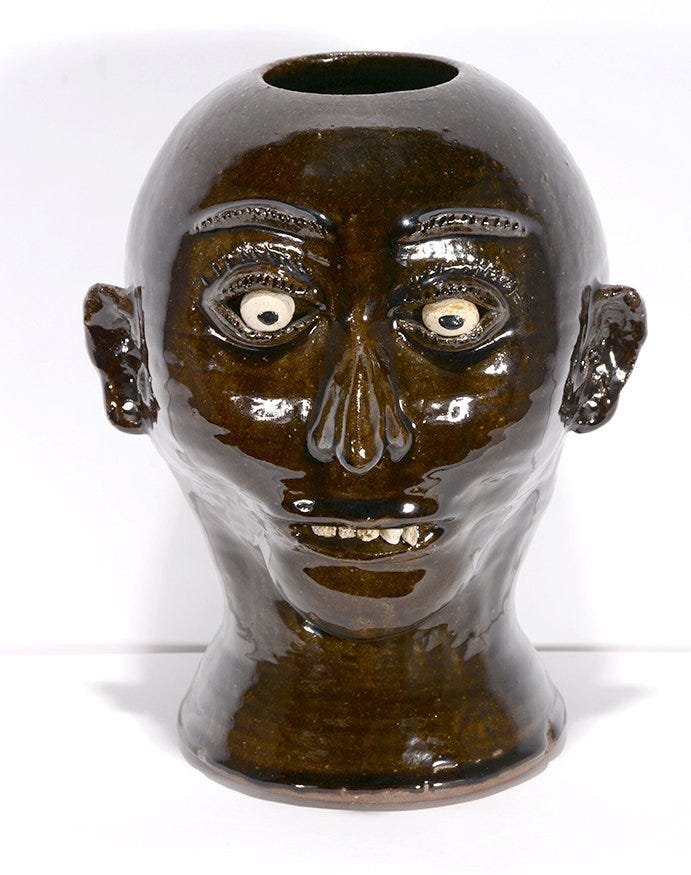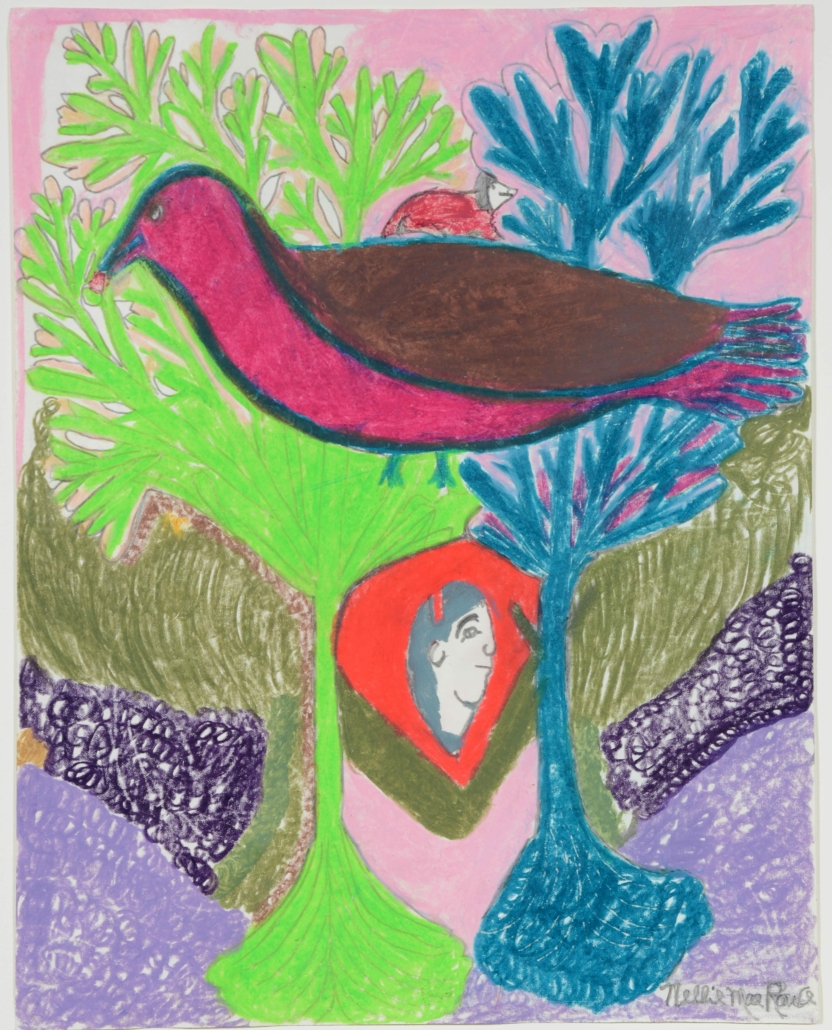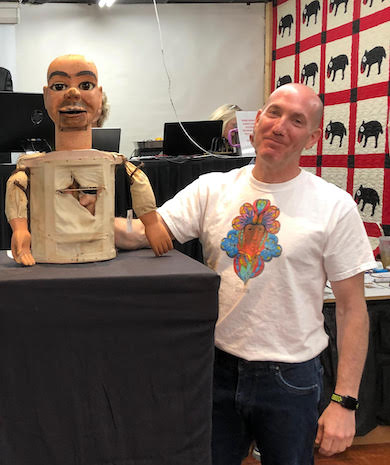
BUFORD, Ga. – Growing up in Georgia, Steve Slotin, who co-owns and operates Slotin Folk Art Auction with his wife, Amy, is quick to say he knew the best swimming holes and BBQ joints, but didn’t know much about the visual culture of the South. It took getting fired from CliffsNotes in his early twenties to discover a passion for folk and self-taught art. The couple spent their honeymoon traveling around the United States buying art. They launched an instantly popular annual art show, Folk Fest, in 1993, and a few years later, began their specialized auction business focusing not just on Southern folk art but self-taught art from all over the country.
How did you get started in this field?
Back in the late 1980s, I was working for CliffsNotes, selling the yellow and black study guides, and my territory was basically the Southeast. One day I was in Cleveland, Georgia, and I went into an old-fashioned soda shop and noticed some Lanier Meaders face jugs. Lanier lived right down the street, and I spent a couple hours with him. Afterwards, I thought ‘What else am I missing, what else is here in my backyard that I am not aware of?’ From that moment on, I was kind of on this quest to really discover the visual culture of the American South. For the next couple of years, as I was selling CliffsNotes, I would stop in and talk to anyone who knew an artist. I ended up spending more time looking for art than selling CliffsNotes, so I eventually got fired. Amy and I got married and while we were on our honeymoon, we were looking for folk art and folk pottery. In 1993, I decided to do a folk art show in Georgia. We were just hoping for a couple of galleries. We ended up getting 60 galleries and almost 10,000 visitors — a huge success. After a few years, I noticed that some of my collectors were getting older and needing to do stuff with their collections. The three D’s they talk about — divorce, deaccession, and death — were happening, and people needed an outlet for their collections. That’s how the auctions came about. We try to include not just Southern folk pottery, self-taught art, and anonymous antique folk art. We try to stretch the umbrella of what American self-taught art is, so you will see Native American or First Nations art and antique Americana anonymous art. We really try to be inclusive as opposed to exclusive.

What has been your greatest satisfaction in this line of work?
A lot of people who start these collections really started out purely for the love of art and found a field that was not highly touted and not expensive to get into. It was more of a journey and experience to meet the artist, collect the art. Then they get to the point in life when they need someone to take care of it and present it properly. That’s what they get from us. When they see other people driving and flying in from all over the country and world to buy their collection, they get immense joy seeing that the next generation is going to take care of what they started their collection with.

What trends in the marketplace are you seeing now?
For 30 years, I have really focused on the American South, those artists that were excluded from the art market and typically those are African American self-taught artists. There are maybe a few highlights that have made it into the mainstream or had big museum shows, but there have been a lot more that have been excluded. I have been touting the African American women from the South such as Clementine Hunter, Sister Gertrude Morgan, Nellie Mae Rowe, and Minnie Evans, and we have really seen those ladies’ artworks catch fire. [Rowe will be the subject of a major exhibition at Atlanta’s High Museum in fall 2021].
I think the awakening of America’s consciousness about how Black Lives Matter also means that black art matters and black genius matters. I think people are waking up to everything that was right here in front of them, but for some reason, they were not able to see. What we have here in the South is a rich environment of great art still left to be talked about, shown, and discovered. These artists should be household names.

You have been at this a while. Does anything still surprise you?
I wish I could tell you I’ve learned it all, but far from it. I catch myself learning stuff every single auction. As we start making the catalog and we try to look up some of the background information, the stories still amaze me on these artists. I am still putting things into sales after 30 years that we’ve never sold before. I am constantly learning and finding new things and it keeps me really excited about the field.
It’s still a fascinating and growing field of art. It’s really America’s only true art form, no European or outside influence … These artists were solely driven to create just for their need of creating, and that’s what makes the field exciting. There is still art being discovered. It’s amazing we are able to keep the field fresh and moving forward, but we are.
_____________________
To contact Steve Slotin and discuss a future consignment to a Slotin Folk Art Auction sale, call 770-532-1115. Visit Slotin Folk Art Auction online. Click to view their past auction catalogs, complete with prices realized.



